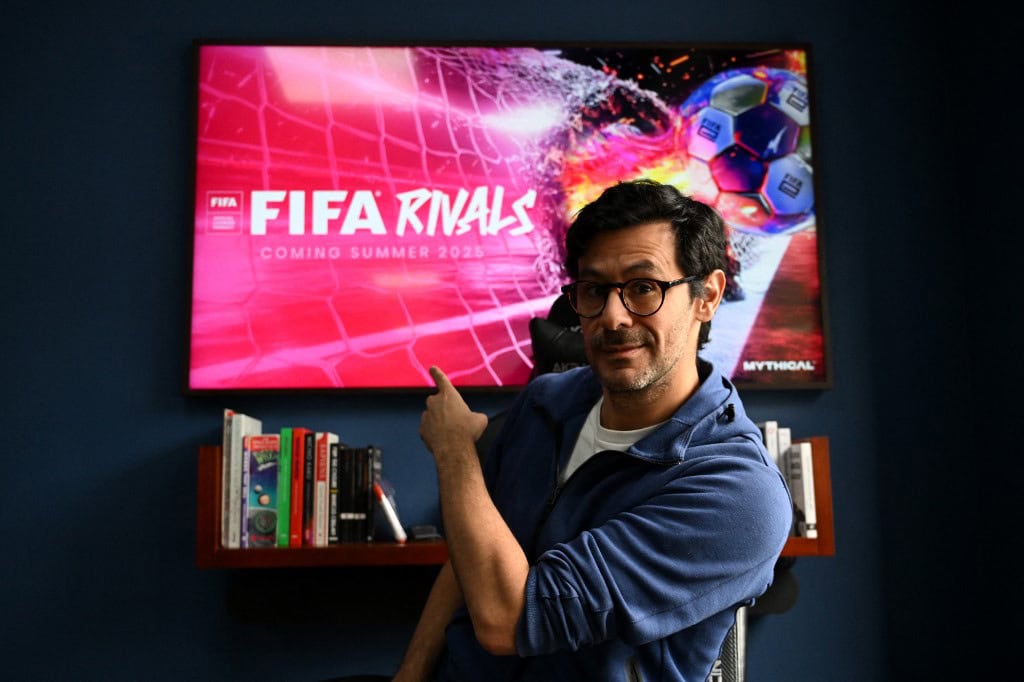Messi, Cristiano Ronaldo, Neymar, and Mbappé become superheroes dodging rivals with “dreamlike” acrobatics: FIFA returns to the video game scene with a mix of soccer and extraordinary player powers, designed in Colombia. In an office in Bogotá, a group of tech-savvy forty-somethings specializing in design and 3D modeling are bringing FIFA Rivals to life — a cartoon-style mobile video game, full of bright colors, athletes with broad torsos and long legs, fiery trails from their moves, and balls that leave glowing streaks behind. The project is the global football governing body’s new bid to re-enter this billion-dollar industry.
For nearly three decades, the FIFA video game — hugely popular on consoles like PlayStation and Xbox — was one of the best-selling and most iconic games in history. But in 2022, FIFA ended its exclusive partnership with EA Sports, the American gaming giant that had co-developed it.
Now, FIFA wants to win back its millions of fans with a foolproof formula: a soccer video game for mobile phone users. This time, it won’t be a realistic simulator like the old FIFA. Lionel Messi, Cristiano Ronaldo, Kylian Mbappé, and other soccer stars will be able to leap several meters and perform acrobatic stunts to score goals.
The game is “seeking its own identity; we don’t want to be a simulation game, (…) but we also don’t want to be at the other extreme of full fantasy games,” explains Jairo Nieto, CEO of Bacon Games, the company designing the game in partnership with U.S.-based Mythical Games.
The release is scheduled just before the Club World Cup, which begins June 14 in the United States, he adds. Unlike the old game, which cost around $70, FIFA Rivals will be free to download but will include in-app purchases to acquire athletes with special abilities.
Superheroes
Partners since 1993, EA Sports and FIFA became kings of the industry. Their franchise sold at least 235 million copies. When their agreement ended, The New York Times reported they had generated over $20 billion in revenue. Over nearly 30 years, they had a historic rivalry with Japanese company Konami, creator of Pro Evolution Soccer (PES).
After the split, EA renamed its product EA Sports FC. It lost the FIFA branding rights but kept the same approach of offering games that closely resembled real-life matches, featuring players nearly identical to their real-life counterparts. FIFA Rivals aims to change the traditional concept of soccer video games, according to the artists at Bacon Games.
Juan Duque is responsible for digitally animating the superhero-like movements of the players. It’s a video game that “combines two very cool things: real-life players, real-life championships, but dreamlike plays,” he says.
In an early teaser released on YouTube, players can be seen holding the ball with their feet and performing flips while fire bursts from their bodies. With this and other features, the developers hope to surpass tens of millions of downloads.
A Milestone
Nieto is convinced FIFA Rivals will shift the paradigm for sports video games of the world’s most popular game. He calls it a “milestone” for Colombia — a country with a prominent position in the region’s gaming industry but still distant from powerhouses like the U.S. and certain Asian countries.
On par with Super Mario or Pokémon, FIFA became a classic partly because of its realism. This time, Nieto and FIFA are breaking the mold, avoiding the replication of physical traits of soccer’s biggest stars in an effort to attract new audiences.
For example, Cristiano Ronaldo will appear as a broad-chested, muscular man, and Swedish striker Zlatan Ibrahimovic will feature his trademark cheekbones and pronounced nose — exaggerated even further. Each player will have an artistic stamp.
“The goal isn’t realism but rather a kind of abstraction of the characters,” explains Andrés Hernández, a 3D artist at Bacon Games.






